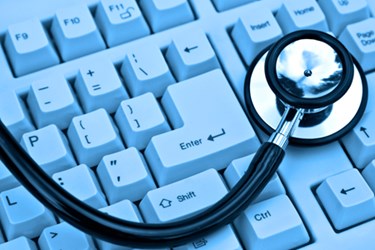Prison EHRs Improve Coordination Of Care

By Christine Kern, contributing writer

A recent study indicates EHRs can help detect abuse and allow linkage to outside EHRs in a prison setting.
The implementation of electronic health records (EHRs) across 12 jails in New York City between 2008 and 2011 led to a “significant improvement” in the ability of officials to monitor and safeguard human rights of inmate patients, according to a new study.
As part of the study, published in Health and Human Rights Journal, researchers modified EHRs to better serve vulnerable populations and enable reporting and analysis of patterns of abuse, neglect, and other patient concerns related to human rights and link to outside EHRs through health information exchanges “so that injuries, mental health exacerbations, and other concerns unique to the correctional setting can be followed up in the community.”
The study does conclude, however, that further efforts are required in order to optimize the potential of the EHR as a tool to promote human rights among patients in jail, and any connection of the EHR – handled by eClinicalWorks – “will require significant educational collaboration with community health providers around the key pieces of information that may indicate jail-based vulnerability.”
The study first identified vulnerable groups of patients or those in high-risk settings, and then adapted the EHR to individual situations to improve care and monitoring for patients, finding fear is a tremendous barrier for treatment in confinement. “Patients in jail often avoid care because they fear their information will not be confidential. Overall, the EHR has allowed us to promote human rights by identifying vulnerable populations and reporting on adverse outcomes associated with their vulnerability. In addition, this capacity for data aggregation and reporting has allowed us to start the implementation of policies that mitigate some of these vulnerabilities.”
The study found “high rates of pre-existing health concerns” among prison populations, with particular concern from violent injuries and mental health stressors.
Because healthcare in the jail system is managed by the Bureau of Correctional Health Services of the city’s Department of Health and Mental Hygiene and security is handled by the city’s Department of Corrections, implementation of healthcare and EHRs is complicated. The New York jail system is also the nation’s second largest prison system, with 12 jails housing roughly 12,000 individuals who represent 80,000 annual admissions. For this reason, a comprehensive and efficient EHR system is even more imperative to guarantee the proper treatment of inmate health issues.
“The jails are chaotic settings where large quantities of information are gathered and care is delivered, and where taking a comprehensive and holistic approach to care is difficult. Without an EHR, it is extremely difficult to pull together sufficient details to detect vulnerability among patients who are subject to abuse or neglect, or to identify those with special needs and to act in a manner to quickly protect them,” the report says.
Accordingly, the EHR infrastructure “was substantially modified for new admission intakes, sick calls, medical emergencies, infirmary care, medication dispensation, hemodialysis, newborn nursery, mental health encounters, and solitary confinement rounds.”
The pilot study was deemed a success, overall, and reported that EHRs were well received by patients and staff, and amounting to about 30,000 documented patient encounters each month.
According to the Pew Charitable Trusts, nationwide, prison health care spending totaled $7.7 billion in fiscal 2011, and while that represents a decrease after a peak of $8.2 billion in fiscal 2009, “a steadily rising aging prison population is a primary challenge that threatens to drive costs back up.”
